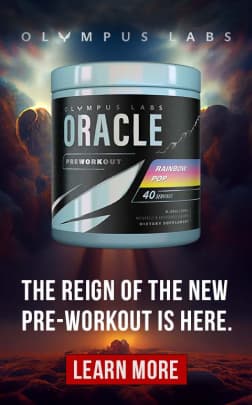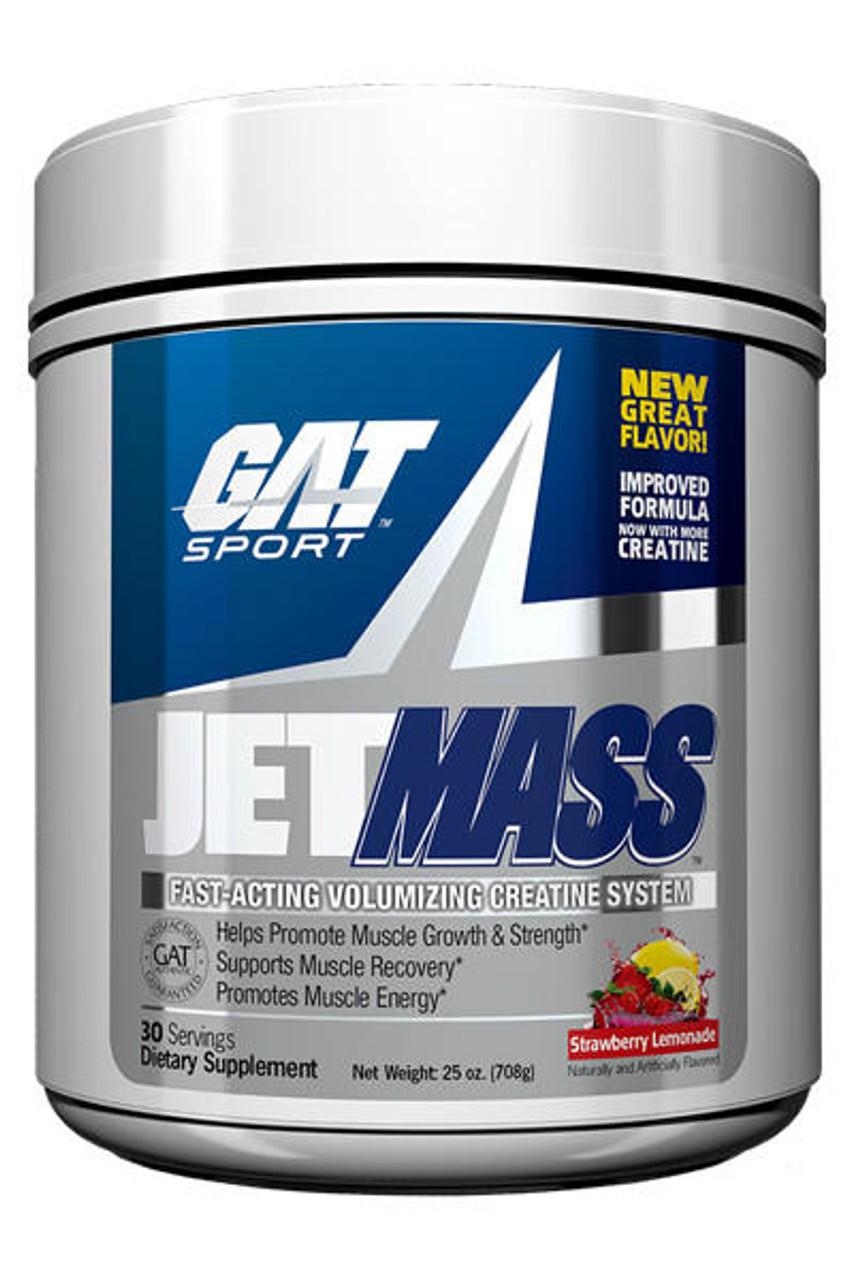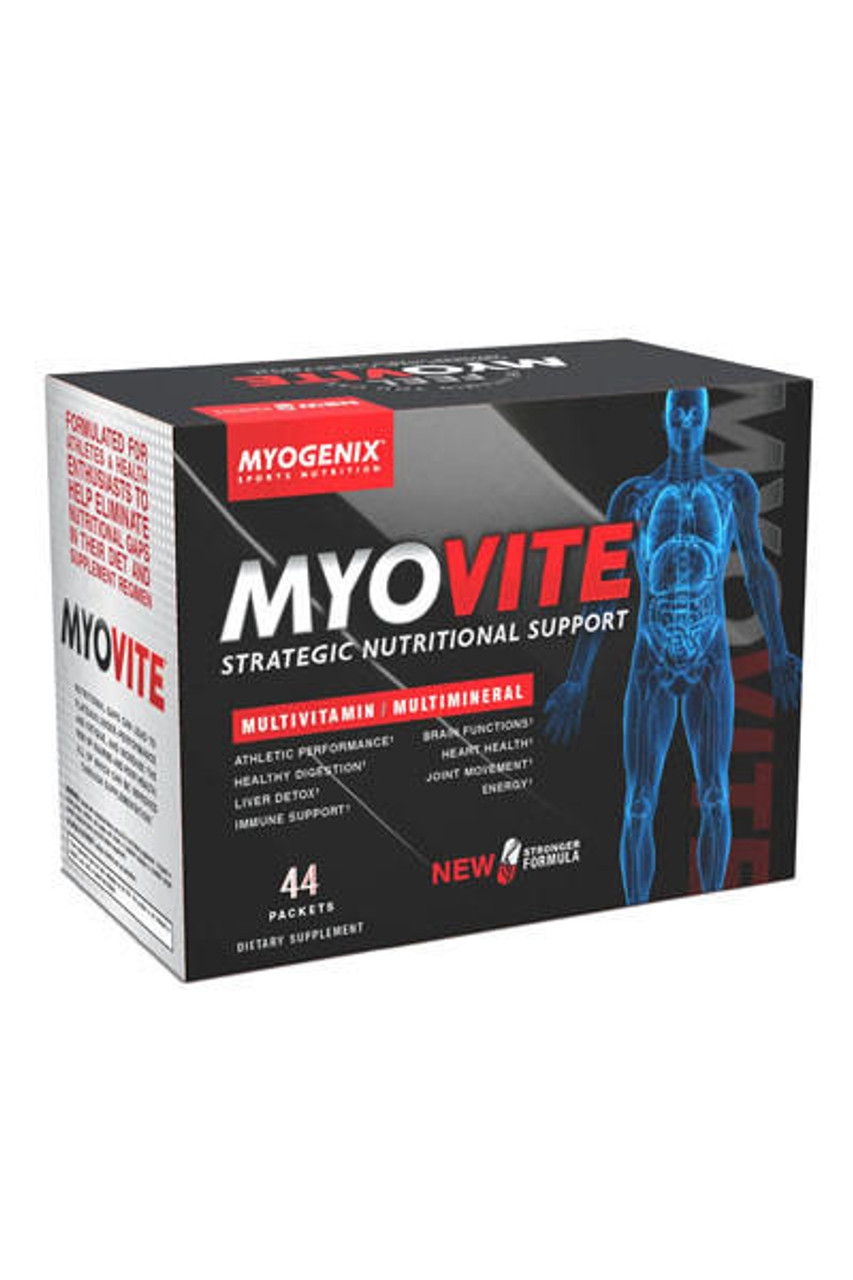How Long Does It Take to Build Muscle: The Definitive Guide
Posted by Leonard Shemtob on May 08, 2024
You’ve asked the burning question: how long does it take to build muscle?
The answer can be both simple and complex—while individual results vary due to factors such as genetics, workout intensity, and nutrition, most people can expect to see noticeable lean mass gains within a few weeks of consistent, targeted strength training accompanied by the right diet and recovery.
In this article, we’ll dive into the science of muscle hypertrophy, outline the essential components of a mass-building regime, and provide practical tips to maximize your gains, realistically setting your expectations on this muscle-building journey.
Short Summary:
- Muscle hypertrophy is a gradual process requiring at least 6-7 weeks of high-intensity training to see significant changes, with factors such as genetics and training intensity affecting the timeline.
- Muscle growth is facilitated by microtears during workouts that repair during rest; therefore, rest days are critical for muscle hypertrophy which is supported by adequate protein intake (1.6–2.2 grams per kg of body weight) and caloric surplus.
- Strength training should combine high-intensity exercises and compound movements, optimized by proper supplement use, namely protein powders, creatine, and natural anabolics to enhance mass gains and recovery.
- Buy The Best Muscle Building Supplement and start building the muscular physique you've always dreamed of!
How Long Does It Take To Build Muscle? - The Timeline of Muscular Development
Scientifically referred to as muscular hypertrophy, the process of building muscles is one that requires considerable time and effort. It’s not an overnight transformation, but a gradual process. The early stages of training can result in noticeable changes in lean mass within the first couple of months.
However, significant changes in lean mass require at least 6-7 weeks of reasonably high-intensity training. As your body adapts to the new workout routine, you might notice improved physical appearances such as:
- a leaner and more toned body
- more muscle definition
- improved posture
- increased strength and endurance
Factors such as genetics and training intensity can cause variations in the timeline of each individual. This means that the speed at which you gain muscle may be different from the person lifting weights next to you at the gym. But no matter your genetics, building muscles requires consistent workouts, a balanced diet, and adequate rest.
Remember, building quality muscle mass is not a race, but a marathon. It takes dedication and patience. Embrace the process and celebrate every small victory along the way, whether it’s lifting more weight or seeing the first signs of muscular definition.
The Early Stages
When you first start your bodybuilding journey, your neuromuscular system, encompassing your brain, nerves, and skeletal muscles, begins to adapt. During workouts, the nervous system sends signals for muscular contraction, marking the initial changes in the nervous system.
These initial changes result in the heart pumping more blood, nutrients, and oxygen to the muscles. This doesn’t directly contribute to visible lean mass gains, but it helps enhance muscular endurance, setting the foundation for hypertrophy in the later stages.
This is an important phase of your journey, as it prepares your body for the intense workouts to come.
Progressive Muscular Development
As you continue your training regimen, consistent workouts cause microtears in muscle tissues. While that might sound alarming, it’s a perfectly normal part of muscle development. These microtears trigger the growth of new fibers, as they stimulate the body to repair and strengthen the damaged fibers.
During rest periods, these microtears in the muscles heal, and muscles adapt by increasing in size, through the incorporation of amino acids into myofilaments. This process of adaptation and growth is why rest days are as important as workout days when it comes to building more lean mass.
A successful mass building routine involves:
- Progressive overload, such as gradually increasing the weight lifted or the number of repetitions performed
- Continuous challenge to stimulate hypertrophy
- Increased lean mass and strength over time
What are Muscles Made Of?
Serving as complex structures, muscles perform significant roles in our bodies: they enable us to move, maintain our posture, and lift weights. At the core of these structures are muscle fibers, which are single muscle cells. These fibers make up muscle cells, and unlike other cell types, they have multiple nuclei.
They increase in size through a process known as hypertrophy. This increase in size is primarily achieved through the addition of nuclei from satellite cells, contributing to muscle gains. Understanding the makeup of muscles can help you visualize the changes happening in your body as you work towards your mass-building goals.
Potential Benefits and Downsides
The benefits of gaining lean mass are abundant, here are some changes you can expect:
- Increased strength and athletic performance
- Improved overall health
- Boosted confidence
- Better performance in daily tasks
- A more toned and fit appearance, which can boost your self-esteem and confidence.
On the health front, building strong muscles can improve overall health, including heart health and metabolism. It can also enhance your athletic performance, making you more effective in the sports or physical activities you enjoy.
Being aware of the potential pitfalls associated with building more lean mass, however, is equally important. Some potential pitfalls to consider include:
- Improper training can lead to injuries
- Muscle building requires a specific calorie intake and diet plan, which might require significant dietary changes
- There can be periods where muscle building progress stalls, leading to frustration
- Some fitness supplements can have potential side effects or be costly
- Mobility issues if proper stretching and mobility training is not performed
It’s important to be aware of these potential pitfalls and take steps to mitigate them in order to have a successful bodybuilding journey.
Despite these potential downsides, the benefits of building lean mass often outweigh the concerns. It’s all about finding the right balance and approach that works best for you.
Muscle Fibers Explained
Skeletal muscle, the muscles that we target during workouts, contain various muscle fiber types, each with distinct functions for movement and exercise.
These fiber types are primarily classified based on their contraction speed and fatigue resistance, and they play a significant role in how our muscles respond to different types of exercises.
There are slow-twitch fibers, also known as type I fibers, which have a slow contraction speed and high resistance to fatigue. These fibers specialize in endurance, making them suitable for aerobic activities like long-distance running.
On the other hand, we have fast-twitch fibers, including type IIx and IIa, which contract quickly and are designed for short, powerful movements. They fatigue more rapidly than slow-twitch fibers, making them suitable for anaerobic activities like:
- weightlifting
- sprinting
- jumping
- throwing
- explosive movements
Type IIa fibers are a hybrid, capable of employing both aerobic and anaerobic energy pathways, providing a balance of endurance and power for diverse physical demands.
The Role of Cells
In the realm of building muscles, satellite cells play a critical role. Acting as a pool of stem cells, satellite cells are ready to multiply and differentiate to repair damaged fibers. This process is essential for repair and growth.
Muscular development is predominantly achieved through hypertrophy, which involves increases in muscle fiber length and girth. Satellite cells play a critical role in this process, helping your muscles grow bigger and stronger over time.
Maximizing Protein Synthesis

The metabolic process of protein synthesis involves the creation of new proteins to repair the fiber damage caused by intense exercise, which in turn increases muscle size.
The balance between protein synthesis and muscle protein breakdown determines muscle tissue changes, with a net positive balance required for building lean mass.
By consuming protein one to two hours before or after strength workouts, optimal protein synthesis can be achieved. Maximizing your gains necessitates a daily intake of 1.6–2.2 grams of protein per kilogram of body weight.
While this might seem like a lot, it’s necessary to fuel muscle protein synthesis (MPS) in order to build muscle.
Several factors like diet, training methods, and hormonal levels affect lean body mass, which is contingent on optimizing muscle protein synthesis. Building muscle requires a caloric surplus, progressive overload through lifting heavier weights, and adequate recovery time to facilitate muscle protein synthesis.
Nutrition for Building Muscle Mass
To foster hypertrophy, a solid regimen of protein consumption combined with resistance training is crucial. For individuals actively engaging in weightlifting, a minimum intake of 0.8 grams of protein per pound of body weight is instrumental for proper growth. Optimizing lean mass gains involves consumption of at least 1.6 g/kg of body weight in protein daily.
Achieving optimal growth requires:
- A caloric surplus; consuming more calories than one expends is foundational
- Post-exercise protein consumption, as it supplies the muscles with aminos necessary for repair and growth
- Carbohydrates, as they stimulate insulin, which aid muscle cells in protein absorption.
Effective Resistance Training Methods
Lean mass gains are stimulated when the muscle is put under sufficient tension, which occurs during challenging resistance training like lifting weights or using resistance bands. Working out at intensities greater than 60% of one’s maximum capacity has been shown to significantly increase protein synthesis.
However, it’s important to note that low-intensity exercises that are not performed to failure do not significantly enhance muscle synthesis or build lean mass. Therefore, to maximize growth, it’s crucial to engage in high-intensity resistance training that pushes your muscles to their limit.
Fitness Supplements: Boosting Your Mass Building Journey
The role of fitness supplements can be crucial in enhancing your journey of building lean mass. They can provide your body with the necessary nutrients and compounds to enhance lean mass gains and aid in recovery.
Among these supplements, creatine stands out due to its ability to result in a 0.5–2 kg greater increase in fat-free mass, directly supporting lean mass gains.
To maximize the effects of creatine, you can start with a loading phase of consuming 5 grams four times a day for five to seven days, followed by a maintenance dose of 5 grams a day. This approach can help you achieve significant lean mass gains in a shorter period.
Best Supplements For Accelerated Mass Gains
When it comes to accelerating mass gains, certain supplements stand out due to their proven effectiveness. These include Creatine, BCAAs, Natural Anabolics, and more, which can significantly enhance muscle and strength.
AnaFuse by Vital Alchemy
AnaFuse is a natural anabolic supplement that combines key ingredients to support lean muscle growth. It contains Epicatechin, which suppresses myostatin to help enhance mass gains, and Turkesterone, which promotes enhanced strength, recovery, and protein synthesis.
- Key Ingredients:
- Epicatechin: Suppresses myostatin and increases follistatin to help build more lean mass
- Turkesterone: An adaptogen that enhances protein synthesis and supports muscle endurance and recovery.
- Eriobotrya Japonica: aids in reducing inflammation and enhancing growth.
- HICA: Promotes recovery by reducing muscle breakdown and supporting MPS.
- Key Benefits:
- Increases lean muscle mass
- Boosts strength and power output
- Enhances recovery and reduces downtime between workouts
- Improves endurance, allowing for longer and more effective training sessions
- Supports overall muscular health by reducing soreness and fatigue
- Promotes better conditioning and growth over time
JetMass by GAT
JetMass is a creatine supplement designed to enhance your size and strength. It contains a blend of creatine, aminos, and other vital nutrients making it perfect for post-workout recovery.
- Key Ingredients:
- Creatine: Increases mass and strength
- Glutamine: Supports faster recovery
- Vitamins: Help reduce oxidative stress and support overall recovery and immune system health
- BCAAs: Stimulates MPS, promotes growth, and provide more energy during workouts.
- Key Benefits:
- Boosts lean mass and strength
- Enhances workout performance
- Improves recovery
- Supports muscular health
- Optimizes energy production
- Helps prevent breakdown or wasting of muscles
Amino Gro by iSatori
Amino Gro is a BCAA supplement that boosts protein synthesis, helps increase IGF, and enhances recovery. It contains a blend of branched-chain amino acids (BCAAs) and essential amino acids (EAAs) making it ideal for supporting lean mass gains and recovery.
- Key Ingredients:
- BCAAs: Stimulates MPS and reduces breakdown of muscles
- EAAs: Enhance recovery by supporting tissue repair and growth
- Colostrum: Provides growth factors, aiding in enhanced recovery and muscular health/repair
- Key Benefits:
- Increases muscle synthesis
- Supports hydration and replenishes electrolytes
- Boosts IGF levels
- Improves workout performance
- Enhances recovery and muscular health
- Supports immune system
Myovite by Myogenix
Myovite is a multi-vitamin supplement designed for athletes and bodybuilders. It contains a blend of vitamins, minerals, and amino acids to support muscle building and overall health.
- Key Ingredients:
- Vitamins: Full spectrum of vitamins to support overall health
- Performance Optimizer Blend: Support muscular function and athletic performance
- Amino Acids: Enhance recovery and accelerate the process of repairing muscles
- Supergreens & Organic Mushroom Blend: Provides antioxidants and immune support, enhancing general wellness and vitality.
- Healthy Heart Blend: Contains ingredients that support cardiovascular health and promote healthy blood circulation.
- Liver Fix Blend: Aids in liver health and detoxification, essential for processing nutrients and recovery.
- Joint & Tissue Support Blend: Supports joint health and tissue integrity, crucial for maintaining mobility and reducing injury risks.
- Key Benefits:
- Supports muscle building
- Enhances workout performance
- Boosts overall health
- Accelerates recovery
- Improves nutrient delivery and utilization
- Supports long-term joint health
- Aids in reducing soreness and risks of injury
Hormonal Mass Builder Stack
For more experienced bodybuilders or powerlifters, the Hormonal Mass Builder Stack is a prohormone stack that boosts muscle and strength. It includes Super Mandro and Andro the Giant for muscle growth, Protex for liver support, Terminate for estrogen control, and Post Cycle 3X for post-cycle therapy.
- Key Ingredients:
- Super Mandro: A potent 1-Andro prohormone that significantly increases test levels and boosts muscle growth
- Andro the Giant: A highly effective 4-andro prohormone which works synergistically with 1-andro to increase muscle mass and strength while boosting libido/sex drive
- Protex: Supports liver, liver detoxification, and healthy blood pressure levels
- Terminate: Helps control estrogen, burn stubborn fat, and lower water retention
- Post Cycle 3X: Supports post-cycle recovery and helps maintain results while re-balancing natural hormones.
- Key Benefits:
- Increases test levels beyond what the body can produce naturally
- Significantly boosts lean mass gains to help build bigger muscles
- Increases strength and athletic performance
- Enhances libido
- Supports liver health and healthy blood pressure levels
- Controls estrogen levels
- Aids in reducing stubborn body fat
- Decreases water retention
- Provides optimal post-cycle recovery
Please Be Aware:
*The Hormonal Mass Builder Stack is only suggested for experienced bodybuilders or powerlifters due to the potential risks of side effects involved. User should have a strong understanding of proper nutrition, supplement cycling, and training in order to use hormonal anabolics such as those included in this stack safely and effectively.*
If you are an athlete who gets tested for performance enhancement, you will want to double check with your regulatory agency before starting any new supplement regimen in order to ensure that the supplements you plan on taking are considered safe for competitive use.
Related Read: Prohormone Stacks: The Best Stacks For Bulking & Cutting
Proper Use of Supplements for Best Results
Understanding the correct usage of muscle-building supplements and resistance training techniques is essential in maximizing muscle building. Incorporating strength training exercises that target major muscle groups in your workout routine is recommended.
When it comes to supplement timing, taking creatine and BCAAs before and after workouts can optimize their benefits.
Diet also plays a critical role in muscle building. Ensuring proper protein intake and calorie intake is key to supporting muscle growth. Additionally, allowing your muscles to recover with proper rest between workouts is essential for muscle healing and growth.
Above all, consistency is key. Staying consistent with your workout and supplement routine can lead to noticeable muscle growth over time. Remember, muscle building is a journey, and every step you take consistently brings you closer to your goal.
General Muscle Building Supplements
Protein powders, including whey, are the primary supplements recommended for muscle growth due to their ability to increase levels of essential aminos that are associated with building lean muscle.
They provide a convenient way to increase your daily protein intake, especially for those who have difficulty meeting their protein needs through food alone.
Creatine is another popular supplement in the muscle-building world. It can enhance muscle growth by raising muscle creatine content up to 40%, improving exercise performance, and increasing water content in muscle cells.
Furthermore, weight gainer supplements provide a high-calorie solution for individuals who have difficulty consuming enough calories through food alone, aiding in muscle increase.
Crafting Your Workout Routine for Maximum Muscle Gains

Crafting an effective workout routine for maximum muscle gain involves considering several factors. Your workout routines should incorporate a mixture of compound exercises and body weight exercises, which are more impactful than isolation exercises for promoting hypertrophy.
Compound exercises like squats, deadlifts, and bench presses target multiple major muscle groups at once, leading to more effective muscle gains.
Programs designed to enhance muscle size can vary from 3 to 6 days per week, allowing for adaptation to individual recovery needs and preferences. The choice of an appropriate workout split, such as full body or upper/lower, is dependent on your experience level and personal recovery capacity.
Ultimately, maximizing muscle growth involves resistance training in combination with adequate protein intake to fuel muscle synthesis. Your exercises should be aimed specifically at the target muscles for effective stimulation and growth.
Strength Training Programs
When starting your strength training program, beginner lifters can train muscle groups more frequently than advanced lifters due to less stress inflicted on muscles. Here are some tips to keep in mind:
- Start with 5-10 working sets per muscle group
- Gradually increase the volume as you gain experience
- Focus on proper form and technique to avoid injury
- Allow for adequate rest and recovery between workouts
Following these guidelines can lead to effective muscle building and help you progress in your strength training journey.
Consistency is key in any workout routine. Significant muscle increases are achieved through workout routines performed regularly over an extended period of time. Incorporating supersets in your strength training routines can also maximize workout efficiency, particularly when working within time constraints.
Recovery and Overtraining
Recovery between workouts is essential for muscle healing and growth, which predominantly occur during rest. It’s recommended to allow 48 to 72 hours of rest before training the same muscle group again, and to ensure a sufficient amount of sleep, ideally 7 to 10 hours for active individuals.
Overtraining is a common pitfall in muscle building. Neglecting to take rest days or adequate sleep can lead to overtraining, which can impede muscle development. Therefore, it’s crucial to strike a balance between resistance training and recovery for more muscle growth.
Potential Benefits and Concerns of Strength Training
Including strength training in an exercise routine can provide several benefits, including:
- Lowering the risk of injury by reinforcing major joints and correcting muscular imbalances
- Promoting physical health by improving muscle strength and endurance
- Making daily tasks and activities easier to perform
Strength training may enhance quality of life by contributing to both physical and mental well-being. The process of building quality lean mass can be a powerful confidence booster, and seeing results can lead to a sense of accomplishment and improved self-esteem.
However, it’s also crucial to be aware of potential concerns related to muscle building. The potential for muscle injury and the risk of overemphasizing aesthetics should be addressed when discussing the topic. Despite these potential concerns, with proper guidance and a balanced approach, muscle building can be a rewarding journey towards better health and fitness.
To Wrap Thing Up
Building muscle is a journey that requires dedication, discipline, and determination. Understanding the science behind muscle growth, the importance of diet and nutrition, and the role of effective strength training methods and supplements can help you achieve your muscle-building goals.
Remember, it’s not just about building muscle, but about improving overall health, boosting confidence, and enhancing quality of life. So, lace up your workout shoes, pick up the weights, and embark on your muscle-building journey today!
Written and Sponsored by Leonard Shemtob
Leonard Shemtob is President of Strong Supplements. Leonard has been in the supplement space for over 20 years, specializing in fitness supplements and nutrition. Leonard appears on many podcasts, written over 100 articles about supplements and has studied nutrition, supplementation and bodybuilding.
Leonard's articles have been published in many top publications around the web. Leonard enjoys weight training, playing basketball and yoga, and also enjoys hiking. In his free time he studies and works on improving himself. For more detailed information, visit his official blog.
FAQs About Building Muscle
Related Articles
Read More About Building Muscle

- Phillips, S. M., & Van Loon, L. J. (2011). Dietary protein for athletes: from requirements to optimum adaptation. Journal of sports sciences, 29 Suppl 1, S29–S38.
- Schoenfeld, B. J., Ogborn, D., & Krieger, J. W. (2017). Dose-response relationship between weekly resistance training volume and increases in muscle mass: A systematic review and meta-analysis. Journal of sports sciences, 35(11), 1073–1082.
- Morton, R. W., Murphy, K. T., McKellar, S. R., Schoenfeld, B. J., Henselmans, M., Helms, E., Aragon, A. A., Devries, M. C., Banfield, L., Krieger, J. W., & Phillips, S. M. (2018). A systematic review, meta-analysis and meta-regression of the effect of protein supplementation on resistance training-induced gains in muscle mass and strength in healthy adults. British journal of sports medicine, 52(6), 376–384.
- Volek, J. S., Volk, B. M., Gómez, A. L., Kunces, L. J., Kupchak, B. R., Freidenreich, D. J., Aristizabal, J. C., Saenz, C., Dunn-Lewis, C., Ballard, K. D., Quann, E. E., Kawiecki, D. L., Flanagan, S. D., Comstock, B. A., Fragala, M. S., Earp, J. E., Fernandez, M. L., Bruno, R. S., Ptolemy, A. S., Kellogg, M. D., … Kraemer, W. J. (2013). Whey protein supplementation during resistance training augments lean body mass. Journal of the American College of Nutrition, 32(2), 122–135.






